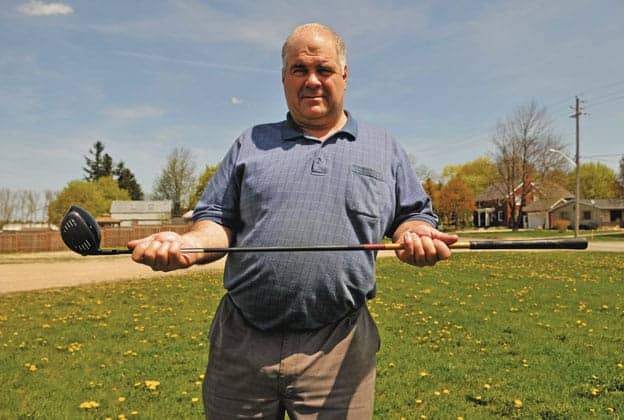To nobody’s surprise, the scenic Winterbourne Valley will be turned into an industrial site, as the Ontario Municipal Board this week gave the go-ahead to the Jigs Hollow gravel pit.
Board member Mary-Anne Sills rendered her decision just moments after Monday’s hearing in which residents made a last-ditch plea to keep the valley intact. They knew it was an uphill battle after the township abandoned the residents, signing off on a deal approving the application by Kuntz Topsoil, Sand and Gravel.
Relying only on expert evidence presented by the applicant, Sills determined “there’s not a problem with this application,” arguing the plan is in conformity with provincial, regional and township regulations. The residents offered up no evidence that would allow the board to deny the appeal brought by Kuntz, supported by Preston Sand and Gravel, she said.
Her declaration that council’s mediated settlement was in the best interest of the township found no traction with some 70 residents who packed Woolwich council chambers Monday morning. Applauding the presentations of fellow residents and scoffing at the claims of the applicant’s lawyers and planners, the audience made its feeling known and had to be reminded by Sills on more than one occasion that the proceedings were a quasi-judicial hearing, not a public meeting.
In the end, however, the residents were not surprised by the outcome, given the OMB’s long history of siding with developers rather than with the public interest. Jan Huissoon, one of five residents given participant status at the hearing, said allowing residents to speak essentially amounted to so much window dressing.
“Nobody was really expecting anything different. We had to try.”
As with the many presentations to Woolwich council, the participants who testified before the OMB maintained that the gravel pit would have a detrimental impact on both the environment and the quality of life of those living in nearby Winterbourne and Conestogo.
“Noise carries right across this hollow. It’s going to go from natural sounds to commercial noise,” said Golf Course Road resident William Norrish, arguing the noise-attenuation measures proposed by Kuntz would be ineffective.
He also questioned the inclusion of asphalt and concrete recycling in the settlement after township council expressly voted against allowing that industrial use at the site.
West Montrose resident Lynn Hare picked up on the recycling aspect, arguing the noise levels, potential contamination of the nearby Grand River and dust-suppressant measures had all been inadequately addressed.
Sills, however, did not agree with any of concerns raised by the residents.
“The applicant has really bent over to try to alleviate the concerns of the public,” she said, adding the parties had been gracious in allowing residents to say their piece in the first place.
Her decision clears the way for Kuntz, in partnership with Preston Sand and Gravel, to extract up to 150,000 tonnes of gravel each year from an 89-acre site at 125 Peel St. The company may also import up to 30,000 tonnes of asphalt and concrete for recycling, as well as topsoil for screening and resale.
Although the township opted out of a battle to protect the public in the Jigs Hollow case, there are two larger gravel pit fights on the horizon. Hunder Developments, the group behind plans for a pit immediately east of Conestogo, has appealed to the OMB Woolwich’s denial of its bid for a pit on some 150 acres of land on two farm properties located at 128 Katherine St. S. and 1081 Hunsberger Rd. Also up in the air is Capital Paving’s bid for a large pit near the West Montrose covered bridge.








